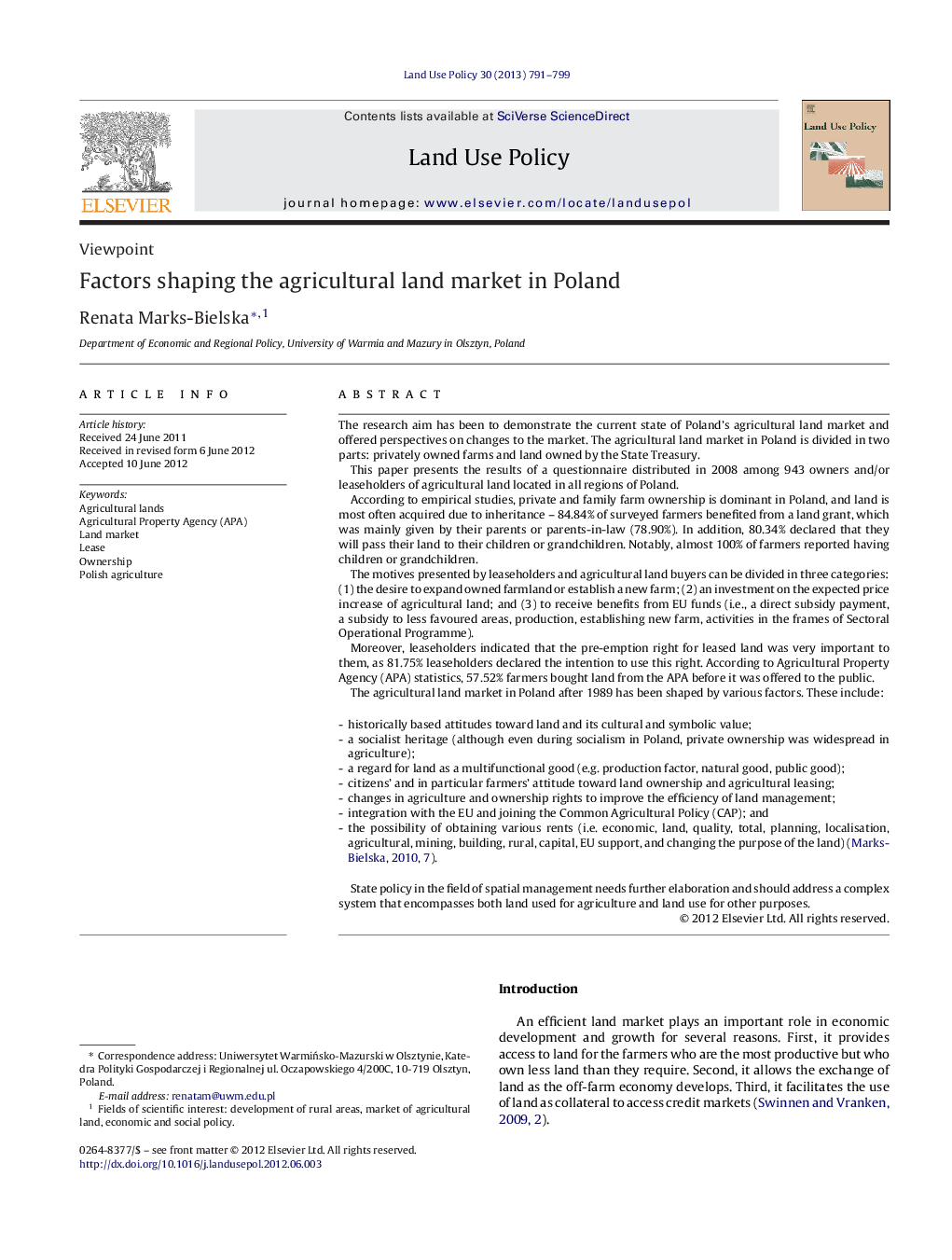| Article ID | Journal | Published Year | Pages | File Type |
|---|---|---|---|---|
| 93039 | Land Use Policy | 2013 | 9 Pages |
The research aim has been to demonstrate the current state of Poland's agricultural land market and offered perspectives on changes to the market. The agricultural land market in Poland is divided in two parts: privately owned farms and land owned by the State Treasury.This paper presents the results of a questionnaire distributed in 2008 among 943 owners and/or leaseholders of agricultural land located in all regions of Poland.According to empirical studies, private and family farm ownership is dominant in Poland, and land is most often acquired due to inheritance – 84.84% of surveyed farmers benefited from a land grant, which was mainly given by their parents or parents-in-law (78.90%). In addition, 80.34% declared that they will pass their land to their children or grandchildren. Notably, almost 100% of farmers reported having children or grandchildren.The motives presented by leaseholders and agricultural land buyers can be divided in three categories: (1) the desire to expand owned farmland or establish a new farm; (2) an investment on the expected price increase of agricultural land; and (3) to receive benefits from EU funds (i.e., a direct subsidy payment, a subsidy to less favoured areas, production, establishing new farm, activities in the frames of Sectoral Operational Programme).Moreover, leaseholders indicated that the pre-emption right for leased land was very important to them, as 81.75% leaseholders declared the intention to use this right. According to Agricultural Property Agency (APA) statistics, 57.52% farmers bought land from the APA before it was offered to the public.The agricultural land market in Poland after 1989 has been shaped by various factors. These include:-historically based attitudes toward land and its cultural and symbolic value;-a socialist heritage (although even during socialism in Poland, private ownership was widespread in agriculture);-a regard for land as a multifunctional good (e.g. production factor, natural good, public good);-citizens’ and in particular farmers’ attitude toward land ownership and agricultural leasing;-changes in agriculture and ownership rights to improve the efficiency of land management;-integration with the EU and joining the Common Agricultural Policy (CAP); and-the possibility of obtaining various rents (i.e. economic, land, quality, total, planning, localisation, agricultural, mining, building, rural, capital, EU support, and changing the purpose of the land) (Marks-Bielska, 2010, 7).State policy in the field of spatial management needs further elaboration and should address a complex system that encompasses both land used for agriculture and land use for other purposes.
► Agricultural land market in Poland after 1989 was analised. ► The research aims has been to demonstrate the current state of Poland agricultural land market. ► The results of a questionnaire distributed in 2008 among 943 owners and/or laseholders of agricultural land located in all regions of Poland. ► Strengthening of the connection between transformations in spatial structure and intensifying the process of diversifying the functions of used land has been recently observed.
